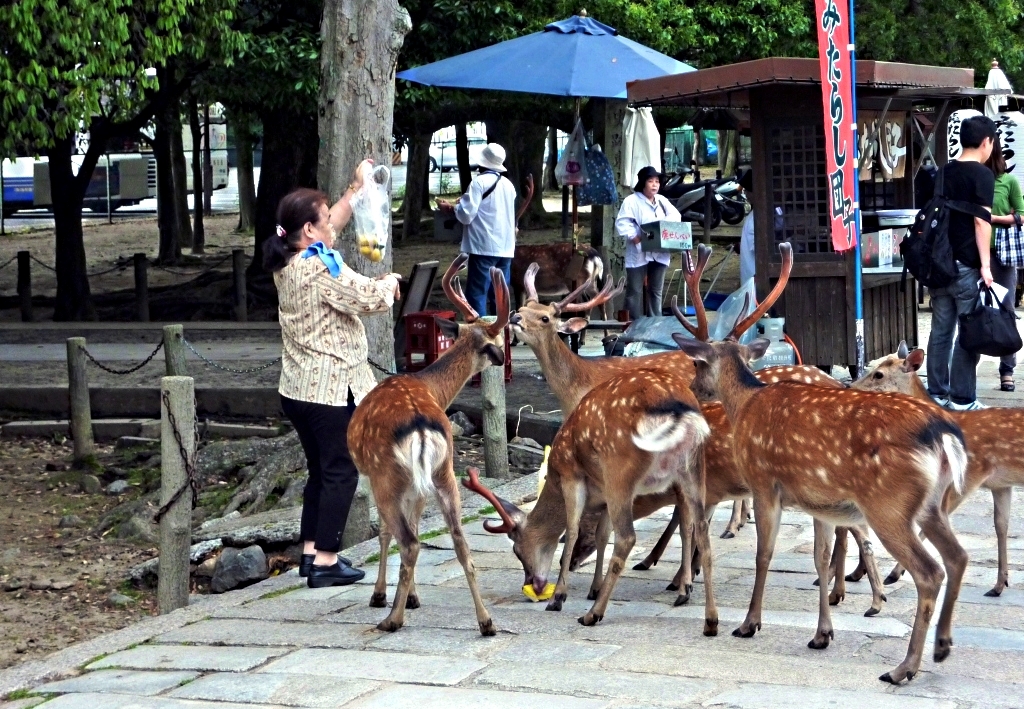Jul 22, 2016
The National Treasures that Roam through Nara Park

Pigs are sacred in Egypt. Cattle are sacred in India. Goats are sacred in Syria. Elephants are sacred in Thailand. In Nara the animals worshiped are deer.
Deer have been roaming the Kasuga Hills in these parts since before there was a written language, before there was a Japan. When Nara was established as capital of Japan in the 8th century, the deity Takemikazuchi-no-Mikoto rode into town on the back of a white deer. More than a mode of transportation, the deer was immediately adopted as a divine symbol. Paintings of future deities often depicted the subjects mounted on similar white deer. Many of the medieval paintings, known today as the Kasuga Mandala, just featured the sacred animals alone.
A Divinity Chiseled in Law
The deer that roamed the streets of Nara were not only considered sacred but their status was codified into law. As protected animals, the penalty for anyone caught killing a deer was death. That prohibition was so old that many later government officials considered the capital offence to be folklore. But in the 1800s there were still people being arrested for crimes against deer although the last official enforcement is considered to have taken place in 1637.
It was a sure indication that Japan had signed on to the modern world when the divinity of the Nara deer was officially revoked after World War II. The herd still retained its protected status even though no one will be put to death for harming a deer. They are considered a living national treasure.
What exactly are the Nara deer?
To a biologist, the Nara deer are known as sika deer. They are commonly referred to as “spotted deer” or sometimes “Japanese deer,” even though their native range covers most of East Asia. While many deer are spotted when young, the sika deer keeps the spots throughout their lifetime.
The sacred status has enabled the deer to thrive in Japan while their numbers have been greatly reduced elsewhere. The elimination of the wolf, the deer’s primary tormenter, on the islands has been a big factor as well. The herds have also been trimmed in China, where they once roamed in abundance, by practitioners of traditional medicines who use the velvet antlers in potions. Japan is the only Asian country that does not harvest deer for medicine.
The Nara Deer Today
Japan harbors the largest population of native sika deer in the world. An estimated 100,000 animals are on the islands, so many that pressure is being exerted on farmlands and forests. In some places the population is being controlled instead of conserved.
Not in Nara. The Nara herd numbers about 1,200 animals. Their main hangout is Nara Park where the mostly tame creatures enjoy handouts of “deer crackers” from tourists that can be purchased for that purpose. The deer roam free and it is not unusual to see them spill out in to the surrounding roadways where they wander among traffic and relax in the medians.
One tradition holds over from their days as sacred animals – people bowing to the deer. And more often than not, they bow back.
By John Hill (Own work) [CC BY-SA 4.0], via Wikimedia Commons
Save


About the author